Staff Members
 |
Matt BeckerMatt’s work focuses on multidisciplinary problems related to cosmology, numerical computing, data analysis, statistics, and machine learning. He has worked on a broad range of topics from image analysis for the Dark Energy Survey to the development of multiple-plane ray-tracing algorithms for computing weak gravitational lensing signals from N-body simulations. After spending several years in industry working in data science, his interests now include the application of AI-integrated techniques to problems in computational cosmology and the use of cosmological simulations as tools for statistical inference. |
HEP B360 C217 [email protected] |
 |
Amy BenderAmy is an experimental cosmologist who builds instruments to measure the cosmic microwave background (CMB) and explore the evolution of the universe. Her primary focus for the past several years has been on developing the multiplexing readout systems used to operate the superconducting detectors used in CMB receivers. These complex readout systems allow many detectors to be operated using a single pair of wires. Thousands of such detectors can then be successfully cooled to sub-Kelvin temperatures where they have exceptional sensitivity to incoming light. She played a leading role in the development of the frequency-domain multiplexed readout for the SPT-3G instrument that is now successfully observing on the South Pole Telescope. Additional areas of expertise and interest include developing millimeter-wavelength detectors and the cryogenic chambers they operated in as well as techniques for analyzing the resulting data. |
HEP B360 C237 [email protected] |
 |
Lindsey BleemDoes the accelerating expansion of the universe require a modification to our theories of gravity or does there exist some new form of energy, so-called ‘Dark Energy?’ Lindsey seeks to answer such questions by studying of clusters of galaxies — the largest gravitationally-bound systems in the universe. Their abundance is a powerful cosmological probe as it depends upon both the expansion history of the universe and the growth of density fluctuations. A member of the South Pole Telescope and CMB-S4 collaborations, her research interests also include large-scale structure, the cosmic microwave background, and the development of bolometric detectors for measurements of the millimeter-wave sky. |
HEP B360 C233 [email protected] |
 |
Michael BuehlmannMichael is a computational cosmologist with a broad interest in large-scale structure formation. His work is focused on the development and application of numerical methods to run and analyze large simulations of our Universe. Together with Nick Frontiere and JD Emberson, he is working on extending the baryonic physics models in the HACC simulation code. |
CPS [email protected] |
 |
Clarence ChangClarence’s interests focus on observational cosmology with a particular emphasis on developing new superconducting technology for use in new experiments. He is part of a joint Chicago/Argonne superconducting detector development collaboration which is developing and building the focal plane for the upcoming SPT-3G experiment. This focal plane, with over 16,000 polarization sensitive detectors, will enable the South Pole Telescope to observe 2500 square degrees with unprecedented sensitivity. SPT-3G will explore the physics of inflation, dark energy, and the cosmic neutrino background. |
HEP B360 C239 [email protected] |
 |
JD EmbersonJD has a broad interest in computational cosmology. His research is focused on the development and application of numerical techniques for large-scale cosmological structure formation. This includes both N-body as well as hydrodynamic simulations in order to gain insight into various astrophysical problems including dark energy, neutrinos, substructure, and reionization. Along with Nick Frontiere, he is leading the effort on the new hydrodynamics capability in the HACC code. |
HEP/ALCF B360 C129 [email protected] Webpage |
 |
Nicholas FrontiereNick has wide interests in physics and computational science. He has worked on computational research projects at National Laboratories for many years. Nick has made many contributions to HACC (in particular the GPU version) and its analysis tools, beginning with work as an undergraduate on the HACC 3-D parallel FFT, now available separately as the DOE ECP-supported SWFFT package. He has played a leading role in the development of a new smoothed particle hydrodynamics (SPH) method, Conservative Reproducing Kernel SPH (CRK-SPH), that overcomes many of the problems of the original SPH technique, while maintaining many of its advantages. Nick is leading the work on the hydro version of the HACC code (with JD) and in the incorporation of a number of subgrid models. |
CPS/HEP B360 C129 [email protected] |
 |
Salman HabibAside from being a member of CPAC, Salman Habib also leads Argonne’s Computational Science Division (CPS). He holds joint appointments at the University of Chicago and Northwestern University. Salman’s research interests span astrophysics and cosmology, accelerator physics, classical and quantum dynamical systems and control theory, advanced statistical methods and machine learning, condensed matter physics, atomic and quantum optics, nonequilibrium field theory, and particle physics. Within cosmology, his current focus is on studies of dark energy, dark matter, neutrinos, and primordial fluctuations. This work involves a number of research directions at the interface of cosmological physics, advanced statistical methods, machine learning, and parallel supercomputing. Salman is the PI for the DOE ASCR ExaSky project that is preparing HACC for coming exascale supercomputers; he has led the HACC team since its first incarnation at Los Alamos. |
HEP/MCS B360 C113 [email protected] Webpage |
 |
Katie HarringtonKatie Harrington is an experimental cosmologist who focuses on instrumentation and data analysis for cosmic microwave background (CMB) experiments. She is a member of the CMB-S4, Simons Observatory, and CLASS collaborations. Her research includes the design, integration, and testing of cryogenic and optical systems as well as the development of software and timestream processing methods for CMB data analysis. As part of CMB-S4 she has been working with the LAT team on advancing the design of the LAT receivers. |
HEP B360 C125 [email protected] |
 |
Andrew HearinAndrew’s research interests are at the intersection of cosmology and galaxy formation. He develops techniques to analyze large-scale structure data from present and near-future galaxy surveys aimed at uncovering the physical nature of dark matter and dark energy. Andrew’s focus is on transforming cosmological simulations into synthetic skies of gas and galaxies, so that simulations can be used as direct cosmological inference engines. |
HEP B360 C121 [email protected] |
 |
Katrin HeitmannKatrin Heitmann, CPAC Group Leader, is a Physicist and Computational Scientist at Argonne National Laboratory in the High Energy Physics and Mathematics and Computer Science Divisions. She is also a Senior Member of the Kavli Institute for Cosmological Physics at the University of Chicago. Before joining Argonne, Katrin was a staff member at Los Alamos National Laboratory. Her research currently focuses on computational cosmology, in particular on trying to understand the causes for the accelerated expansion of the Universe. She is responsible for large simulation campaigns with HACC and for the tools in the associated analysis library, CosmoTools. Katrin is a member of several major astrophysical surveys that aim to shed light on this question and is the computing coordinator for the Large Synoptic Survey Telescope Dark Energy Science Collaboration. |
HEP/MCS B360 C125 [email protected] |
 |
Eve KovacsEve’s research interests are focused on understanding the galaxy-halo connection and the simulation and validation of mock galaxy catalogs for upcoming sky surveys such as LSST. She is a member of DES and LSST-DESC. Eve is also interested in supernova cosmology, and in particular, the photometric classification of supernovae using machine-learning techniques. |
HEP B360 L177 [email protected] |
 |
Patricia LarsenPatricia’s interests focus mainly on measurements of weak lensing in cosmological surveys. In particular she has worked on combining weak lensing measurements of the CMB and cosmic shear, and on understanding astrophysical systematics affecting weak lensing surveys, including galaxy intrinsic alignments. |
CPS [email protected] |
 |
Adrian PopeAdrian Pope is a member of Argonne’s CPS Division. He has studied the large-scale structure of the Universe dating back to his work as an undergraduate (and after) on the Sloan Digital Sky Survey. Adrian plays a leading role in the development of HACC, beginning with the initial code prototype that ran on Roadrunner at Los Alamos, the first machine to break the petaflop barrier. He is currently investigating the optimization of HACC kernels on Aurora 2021, planned to be the first exascale system in the US, and expected to arrive at Argonne in 2021. Adrian also has interests in applications of advanced statistical methods in cosmology. |
CPS B240 1123 [email protected] |
 |
Esteban RangelSteve Rangel is a computer scientist with broad interests in solving large-scale data analysis problems using HPC platforms. He is the main developer of HACC’s halo merger tree construction and analysis framework, using a new algorithm that employs the recently developed ‘core-tracking’ methodology. Steve also led work on a new parallel tessellation-based density estimation code that is now being used for work on weak and strong gravitational lensing (with Patricia). Steve is now also working on HACC’s implementation on exascale platforms. |
ALCF [email protected] |
 |
Nesar RamachandraNesar Ramachandra is a cosmologist with interests in the dynamics of large-scale structure formation; he is also working on the implementation of state of the art statistical and machine learning methods for cosmological data analysis and fast prediction tools (emulators) as part of the SciDAC-4 project led by CPAC. |
CPS [email protected] |
 |
Thomas UramTom is a software engineer at the ALCF with extensive experience in software projects that involve high performance computing. He is the main developer of Balsam, an HPC workflow and edge service for running a large number of jobs on HPC systems. Tom has a leadership role in software management for HACC’s CosmoTools library; he has also led the work in making simulation data widely available through Argonne’s Petrel Data Pilot project. |
ALCF B240 4141 [email protected] |
 |
Gensheng WangGensheng Wang is a physicist working on astrophysical instrumentation. His major achievements have been the delivery of a large array of superconducting bolometers for the SPT-3G project and the delivery of absorber coupled superconducting bolometers for the SPTpol project. His current work includes superconducting bolometric detector R&D for CMB-S4; physics and technology of superconducting detectors for astrophysics, nuclear physics, and particle physics; superconducting electronics for detector multiplexing; and laboratory instrument construction.. |
HEP B360 [email protected] |
Postdocs
 |
Gillian Beltz-MohrmannGillian’s research focuses on cosmology, large-scale structure, and the galaxy-halo connection. She is particularly interested in harnessing the cosmological constraining power of small-scale galaxy clustering in galaxy redshift surveys. This involves developing accurate models of the way in which galaxies occupy dark matter halos, and applying these models to large cosmological simulations in order to make predictions of galaxy clustering that can be compared to observations. Gillian received her PhD from Vanderbilt University in 2022 and her BA from Wellesley College in 2016. |
HEP B360 C145 [email protected] |
 |
Biswajit BiswasBiswajit is an observational cosmologist interested in studying dark energy with probes like cosmic shear. His goal is to develop statistical and machine learning models capable of handling the volume and complexity of cosmological data from the next generation of surveys. At CPAC, he works closely with Matt Becker on the estimation of shear from cosmological images, primarily within the LSST-Dark Energy Science Collaboration (DESC). Before joining Argonne, Biswajit obtained his Ph.D. from École Normale Supérieure (ENS) – Université PSL, where he worked at Laboratoire AstroParticule et Cosmologie (APC). |
HEP B360 [email protected] |
 |
Giulia CampitielloBeing the largest virialized systems in the Universe, galaxy clusters represent a crucial clue for the investigation of its content, structure and evolution. For this reason, they have always fascinated Giulia, whose research focuses on the physics of the intracluster medium (ICM). This hot plasma can be considered a sort of archive where information about the past and recent history of galaxy clusters are stored. Through a multi-wavelength approach, Giulia aims to investigate how the distribution of the ICM has been shaped by a great variety of phenomena, such as merger events or AGN activity, and how these perturbations may affect ongoing cosmological analyses. |
HEP B360 [email protected] |
 |
Will HicksWill is a computational astrophysicist with interests in cosmology and galaxy formation. He is a member of the HACC team, and is currently working on developing tools that allow members of the community to access and analyze data from massive cosmological simulations without requiring direct access to HPC platforms. Will received his Ph.D from UC San Diego in 2024, where his scientific focus was galaxy formation before the Epoch of Reionization. For his thesis work, he implemented a number of physics models into the adaptive mesh refinement (AMR) astrophysics and cosmology code, Enzo-E, significantly enhancing the code’s physics capabilities and commissioning it for use in running large-scale galaxy-forming cosmological simulations. Main developments include separate subgrid and surrogate models for Population II and Population III star formation and feedback, as well as M1 closure radiative transfer. |
HEP B360 [email protected]> |
 |
Florian KeruzoreFlorian is an observational cosmologist, mainly interested in galaxy clusters as a cosmological probe. As galaxy clusters constitute the largest gravitationally bound objects in the Universe, their distribution across space and time is sensitive to large-scale structure formation physics, and can be used to probe the fundamental properties of the Universe. Florian’s work targets the study of systematic effects in galaxy cluster cosmology, especially focusing on cluster observations at millimeter wavelengths and the measurement of cluster masses. |
HEP B360 [email protected] |
 |
Alan PearlAlan works closely with Andrew Hearin and others to develop models of the galaxy-halo connection, implemented with Python’s JAX library to enable GPU acceleration and automatic differentiation. He is focusing on improving the scalability of this model to extremely large datasets by designing a framework that performs distributed parallel computation, while seamlessly preserving the advantages of JAX. Alan’s goal is to use this framework to self-consistently fit a wide array of observed galaxy population statistics over cosmic time to further improve our understanding of both cosmology and galaxy formation physics. |
HEP B360 C129 [email protected] |
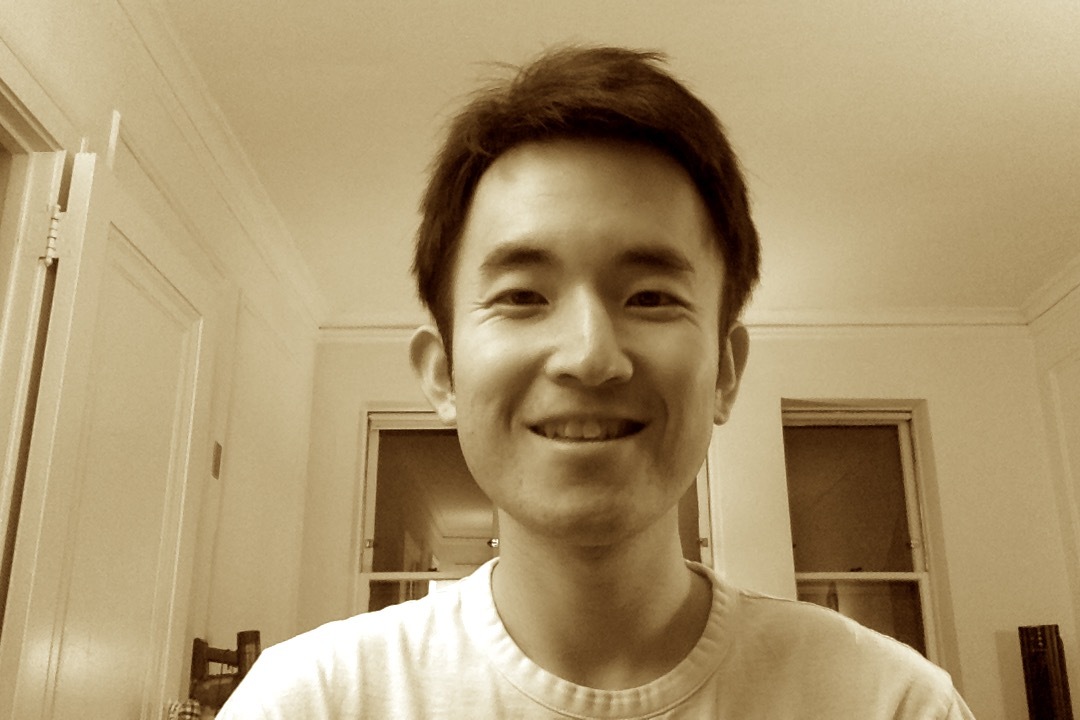 |
Wei QuanWei has been a member of the South Pole Telescope (SPT) collaboration since 2017 and has analyzed data from the telescope. His current main project is to significantly improve SPT’s existing measurements of the angular power spectra of the temperature and E-mode polarization anisotropies of the CMB (the EE/TE/TT spectra) and constraints on LCDM parameters obtained from the spectra by using more recent and much more powerful data from the telescope. He hopes that new SPT results will provide interesting insights into the Hubble tension. He graduated from the University of Chicago and joined the CPAC group in May 2024. |
HEP B360 [email protected] |
 |
Patrick WellsPatrick is an observational cosmologist and software engineer working to develop tools for analyzing modern petabyte-scale astronomical datasets. Contemporary astronomical datasets, such as LSST, are acquired and analyzed over the span of decades. He believes building excellent software and systems with a long-term focus makes astronomy more accessible and accelerates the pace of discovery for new and experienced scientists alike. His day-to-day work at Argonne focuses on adapting high-performance computing systems systems to provide services that enable astronomers to conduct science at scale without worrying about managing data or computing resources. He is a member of the TDCOSMO collaboration, which uses strong lensing to constrain cosmological parameters such as the Hubble constant. Patrick uses his software to study the local environments of these lenses and provide estimations of the impact of external structures on the results inferred from the strong lens itself. He also has broader interests in cosmological structure, weak lensing, and computational science. |
HEP B360 [email protected] |
 |
Georgios ZacharegkasGeorgios’s research focuses on the study of the galaxy-halo connection, the large-scale structure of the Universe and cosmology. He has worked on building models to describe the spatial clustering of galaxies and weak gravitational lensing, using the Halo Occupation Distribution framework, which allow for the modeling of both the small and large angular scales in a self-consistent way. His main goal has been to analyze data from cosmological surveys, such as the Dark Energy Survey, using such models that can utilize the power in the nonlinear scales to constrain cosmology and the galaxy-halo connection physics together. At Argonne he is further developing numerical code, based on Python’s JAX library that enables automatic differentiation, to describe the observed photometry of galaxies using physically motivated models. The main goal is to apply these models to data from large surveys in order to constrain the physical properties of galaxies and develop catalogs that can be utilized in studies of cosmology and galaxy formation and evolution. In addition, he is broadly interested in data science and he is working on developing machine-learning tools, such as emulators, that make analyzing large data sets efficient. |
HEP [email protected] |
Students
 |
Xiaofeng DongXiaofeng is a starting graduate student from UChicago. He is currently working on implementing radiatiave cooling and AGN feedback into numerical simulations with advanced computing methods, and is beginning theoretical explorations of cosmological large scale structure formation problems. |
B360 C145 [email protected] |
 |
George IskanderGeorge Iskander is a PhD candidate at UChicago. He works with and is advised by Salman Habib. His work focuses on high-resolution simulations of ultralight dark matter. | B240 [email protected] |
 |
Kayla KornoeljeKayla Kornoelje is a graduate student at the University of Chicago. She is a member of the South Pole Telescope group (SPT), in collaboration with Lindsey Bleem and the cluster working group at Argonne. Her primary interests lie in secondary anisotropies of the Cosmic Microwave Background (CMB), such as the tSZ effect, and their relationship to galaxy clusters. |
B360 [email protected] |
 |
Niyantri KrishnanNiyantri is a postbac working on understanding the pressure profiles of gas particles in halos. Her interests involve the galaxy-halo connection, Cosmic Microwave Background, Early Dark Energy and computational physics. |
B360 [email protected] |
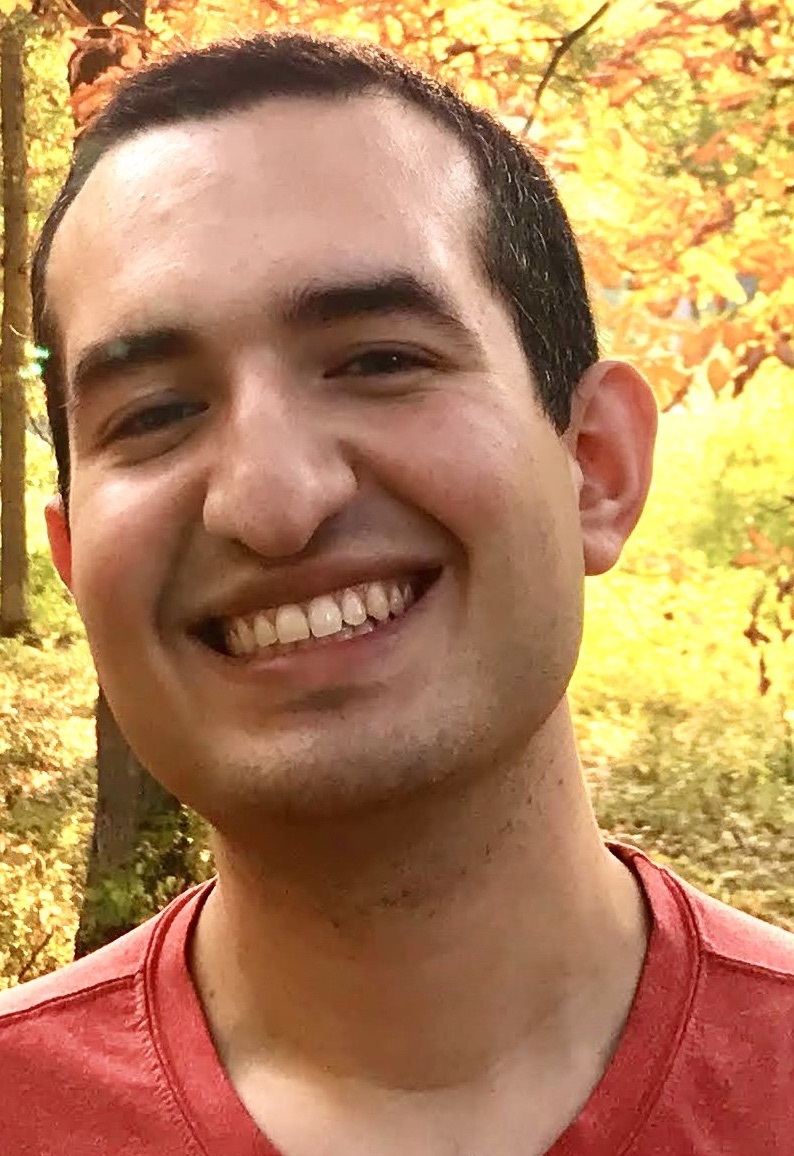 |
Ismael MendozaIsmael is a graduate student at the University of Michigan and a DOE SCGSR fellow at Argonne. He works with Matthew Becker at Argonne, is advised by Camille Avestruz at the University of Michigan, and is a member of the LSST Dark Energy Science Collaboration. His current work focuses on developing novel Bayesian algorithms for recovering the weak gravitational lensing signal in astronomical images. He has broad interests in applying statistical methods to large datasets from upcoming optical (particularly LSST), weak lensing systematics, machine learning algorithms, developing software pipelines, large scale structure, and n-body simulations. |
B360 [email protected] |
 |
Kihana WilsonKihana is a postbac working on characterizing the evolution of early-universe protoclusters using simulations, particularly looking to understand how many structures are present in the simulations at early times, how they evolve forward in time and their status at z=0, and how many present day galaxy clusters can be traced back to these protoclusters in the early universe. Broadly, she is interested in computational cosmology, large-scale structure cosmology, the galaxy-halo connection, and galaxy formation physics. |
B360 [email protected] |
Administration
Recent Alumni
 |
Enia XhakajEnia’s research primarily revolves around large-scale structure and cosmology. As a postdoc she engaged in utilizing cutting-edge N-Body simulation suites to create a practical framework for conducting cosmological inference. The overarching objective of her work was to gain a deeper understanding of the distribution of baryonic matter within DESI by analyzing observed data from various sources, such as weak lensing, projected clustering, and the thermal Sunyaev-Zeldovich effect. |
|
 |
Xin LiuXin completed her PhD in Physics as a member of CPAC. Her reseach focused on using simulation and data analysis as tools to gain get a deeper understanding of cosmological problems. |
|
 |
Markus Michael RauMarkus thrives on challenging problems and possess a deep passion for Observational Cosmology, Machine Learning, and Data Science. His experience covers a wide range of techniques from Deep Learning to Bayesian Hierarchical Modeling, Markov models, Spatial Statistics, and Operations Research. He specializes in analyzing data and devising cutting-edge analysis methods for some of the largest telescopes on Earth, like the Vera C. Rubin Observatory. |
|
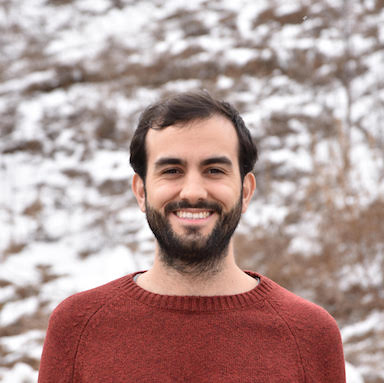 |
Alex Alarcon GonzalezAlex is a cosmologist with interest in the study of the expansion and growth history of the Universe using data from galaxy surveys and cosmological simulations. As a postdoc in CPAC, he probed the physics responsible for the formation of structures using numerical simulations in order to model observables related to cosmological inference. He has worked in the analysis of galaxy clustering measurements and photometric redshift error estimation and calibration to extract unbiased cosmological information from lensing surveys. |
|
 |
Riccardo GualtieriRiccardo is a cosmologist with a strong background in instrumentation, detectors and readout. As a postdoc in CPAC, he characterized the properties of the early Universe by studying the Cosmic Microwave Background and its polarization. |
|
 |
Antonia Sierra VillarrealAs a postdoc in CPAC, Sierra’s research interest lay in better understanding and quantifying the connections between simulations and the phenomenological understanding that can be gleaned from these to the observable universe. This manifests in the study of halo assembly bias as a function of the choice of halo definition, determining how much potential bias in cosmological parameters can arise from underlying dark matter power spectra assumptions, and aiding in the generation of simulated images for future surveys as the Vera Rubin LSST. Sierra is a builder in the LSST Dark Energy Science Collaboration and recipient of the 2021 NERSC Award for Innovation in high Performance Computing. |
|
 |
Jonas Chaves-MonteroAs a postdoc at CPAC, Jonas’ research focused on the study of the distribution of galaxy positions and velocities at large scales, and how to use this information to obtain a better understanding of the dark side of the Universe — dark energy and dark matter. Jonas developed theoretical tools to extract unbiased cosmological information from galaxy surveys using numerical simulations of large-scale structure. |
HEP Webpage |
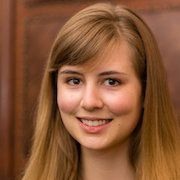 |
Hillary ChildAs a graduate student at CPAC, Hillary’s research focused on the evolution of dark matter halos in simulations, on modeling the redshift dependence of the concentration-mass relation, and understanding how the concentration of a halo changes as it grows. She also developed techniques using the bispectrum to improve measurements of the baryon acoustic oscillations (BAO) length scale. |
[email protected] |
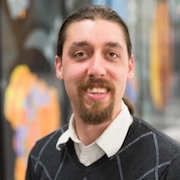 |
Hal FinkelHal Finkel graduated from Yale University with a Ph.D. in theoretical physics focusing on numerical simulation of early-universe cosmology. He was the Lead for Compiler Technology and Programming Languages at the ALCF. Hal has contributed to the LLVM compiler infrastructure project for many years and is currently the code owner of the PowerPC backend and the pointer-aliasing-analysis subsystem, among others. He is the lead developer on the bgclang project, which provides LLVM/Clang on the IBM Blue Gene/Q supercomputer, and represents Argonne on the C++ Standards Committee. Hal also helps develop the Hardware/Hybrid Accelerated Cosmology Code (HACC), a two-time IEEE/ACM Gordon Bell Prize finalist. He has designed and implemented a tree-based force evaluation scheme and the I/O subsystem and contributed to many other HACC components. He is currently the Director, Computational Science Research and Partnerships (CSRP) Division, ASCR. |
|
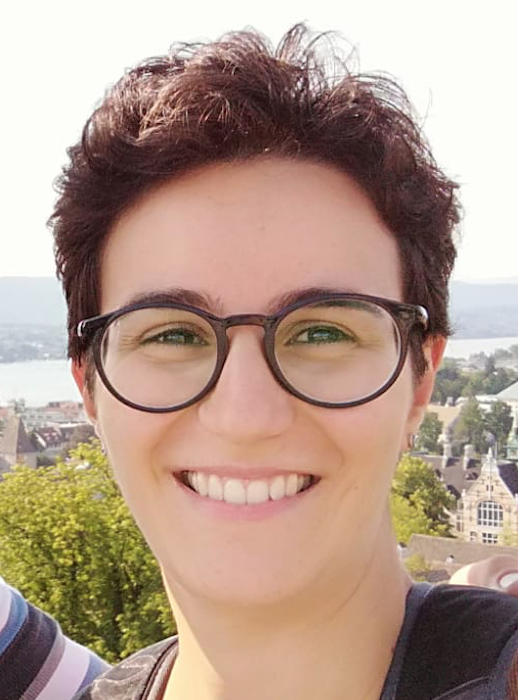 |
Martina GerbinoAs a postdoc at CPAC, Martina Gerbino worked as a theoretical cosmologist at the interface between theory and observations, with a particular focus on testing fundamental physics theories against data. Her research spanned a wide range of phenomenological investigations of theoretical models with a main focus on neutrino physics to CMB data analysis and interpretation. She also made significant research contributions in her work as a member of the Planck, Simons Observatory and CMB-S4 collaborations. |
|
 |
Joe HollowedAs a postbac at CPAC, Joe’s work focused on the construction of synthetic galaxy catalogs and associated lightcones, providing simulation support for cluster cosmology studies, and large-scale structure research within the SPT and Vera Rubin Observatory LSST DESC. |
Webpage |
 |
Dan KorytovAs a graduate student at CPAC, Dan’s research focused on the connection between galaxies and dark matter halos. Dan helped developed a novel method of determining galaxy positions by explicitly tracking simulation particles (‘core-tracking’), designed to improve the robustness of dark matter substructure identification and the quality of models of satellite galaxy evolution. Dan’s cosmology research also played a key role in the development of cosmoDC2, the principal synthetic galaxy catalog used in Data Challenge 2 of the Vera Rubin Observatory LSST DESC. |
[email protected] |
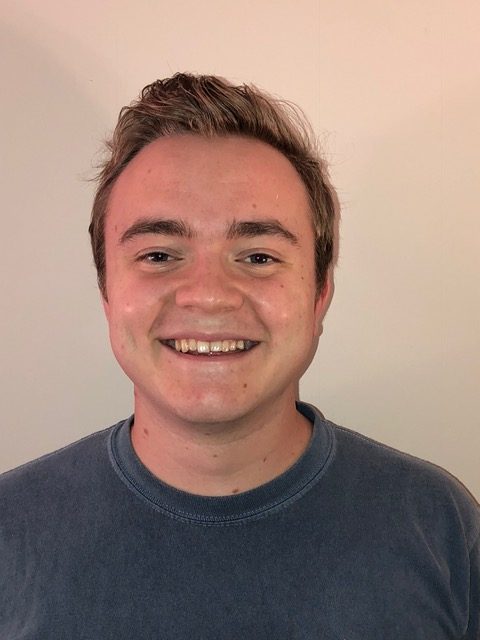 |
Gabe LynchAs a postbac at CPAC, Gabe’s work focused on cosmological simulations of Bose-Einstein condensate dark matter (BEC), involving the development of a spectral Schrödinger-Poisson solver using SWFFT, the 3D distributed FFT developed for the ExaSky project. Gabe’s research is motivated by the goal of deepening our understanding of structure formation in BEC dark matter models, as well as providing a useful tool to validate traditional n-body codes. |
|
 |
Maya Mallaby-KayMaya was a graduate student at the University of Chicago and DOE SCGSR fellow at Argonne. Her work focused on using CMB cross correlations to probe large scale structure and learn about distant galaxy clusters. Maya’s research interests also include the CMB, simulating observables for cross correlations and data accessibility. |
|
 |
Bricker OstlerBricker is a Physics PhD candidate at the University of Chicago. His research interests run the gamut of computational physics and high-performance computing, with particular emphasis on numerical hydrodynamics, radiation transport, and their applications in cosmological simulations. He is particularly interested in new meshfree hydrodynamics methods and Monte Carlo techniques for radiation transport. |
|
 |
Zhaodi PanZhaodi is an experimental cosmologist working on millimeter-wavelength instrumentation and data analysis. Zhaodi works across the boundaries of hardware building, instrument calibration, astrophysical observation, data reduction, and scientific interpretation. Prior to joining Argonne he worked on building and characterizing a prototype spectrometer for the proposed NASA explorer-class mission PIXIE. He also worked on optical characterizations for detectors used for SPT-3G. Now his research focuses on two aspects of cosmology. 1) developing next-generation detectors and material characterization for these new detectors. 2) the gravitational lensing data analysis to constrain the growth of the structure of the universe. |
|
 |
Malin RennebyAs a postdoc at CPAC, Malin’s research focused on how to statistically constrain the galaxy-halo relation through cosmic time with weak lensing and galaxy clustering with semi-analytical models of galaxy formation and hydrodynamical simulations, and on characterizing the imprint of baryonic processes such as AGN feedback on halo profiles and clustering amplitudes. |
|
 |
Imran SultanAs a postbac at CPAC, Imran’s work focused on the substructure of dark matter halos in the HACC simulations, and understanding how satellite galaxy evolution can be predicted by applying additional modeling to a HACC core catalog: a record of the central particles of halos identified in a simulation. |
|
 |
Vinu VikramAs a postdoc at CPAC, Vinu’s work focused on developing new tests of whether LCDM provides the correct theory of gravity on cosmological scales, and on measuring the baryonic mass contents of the universe with observations of the CMB. |
|
 |
Isabele Souza VitórioIsabele was a postbac working on understanding the evolution of galaxies and halos using simulations. Her interests involve the galaxy-halo connection, large-scale structure, CMB, and computational physics. |
|
 |
Joseph WickJoseph is a post masters student who worked on scaling theoretical tools in preparation for exascale computing to enable the use of n-body simulations to forward model future galaxy surveys. Broadly, Joseph’s interests include computational cosmology, high performance computing, and the galaxy-halo connection. |
